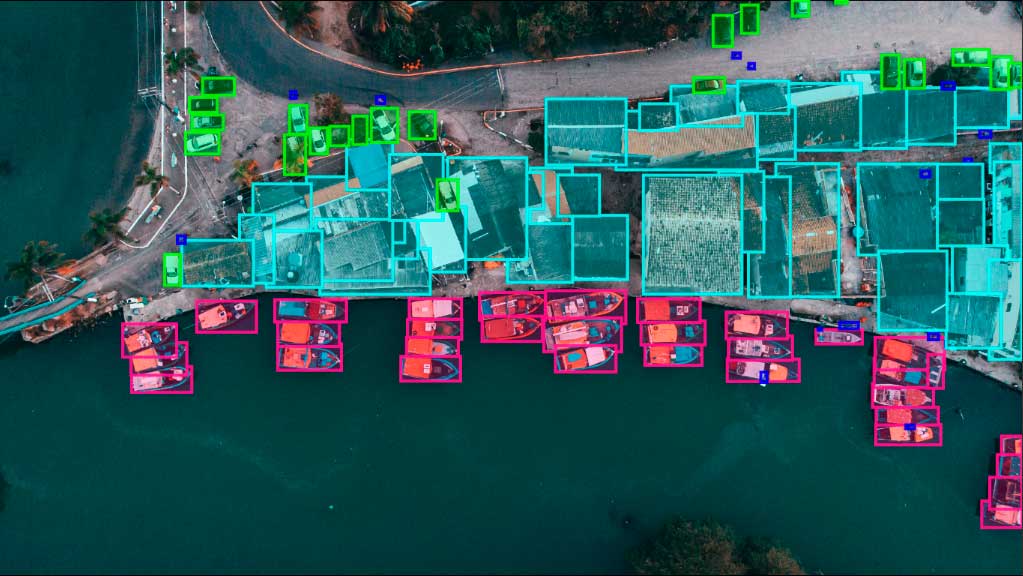Overcoming Supply Chain Issues with AI

The COVID-19 pandemic has led to a supply chain crisis that is ongoing. Fluctuations in demand, labour shortages and distribution delays have led to many products becoming harder to access for consumers. As a result many governments and companies are looking at ways to improve supply chain resilience and reliability in the future.
To achieve this many organisations are turning to computer vision based AI models. These models can be used to create robust, automated systems that make the supply chain more efficient and more cost-effective. However, for this technology to reach its potential it is important that developers have access to image annotation services for AI training.
This blog will focus on two areas of progress for AI in supply chain management. First by examining the uses for AI in the shipping industry, and in package distribution and delivery. Finally we show how professional annotation providers can help companies to create powerful AI training datasets.
Automation and safety for the shipping industry
Shipping is at the heart of the global supply chain. Computer vision AI can help this important sector in the following ways:
- Image recognition: It can be difficult to navigate busy shipping lanes safely. Consequently AI developers are creating image recognition technology that allows onboard safety systems to recognise other vessels. In low visibility conditions this technology can warn pilots of possible collisions and keep ships safe.
- Unmanned vessels: Autonomous ships could change the shipping industry by reducing costs and increasing the volume of shipments. However, these vessels need to be able to interpret the world around them in real time so that they can remain safe and avoid obstacles. Computer vision AI allows unmanned vessels to recognise sea states and other ships.
- Automated shipping terminals: Automation can help to support operators by reducing the amount of inputs required per minute, ensuring both efficiency and safety at terminals. AI powered cranes move and guide machinery to where it needs to be. In addition automated vehicles can move containers across ports to waiting trucks for transportation.

Computer vision for distribution and delivery
The final step in the supply chain is the delivery of a product to a customer. AI can support this important process as these examples show:
- Increasing distribution efficiency: Most warehouses use barcodes to sort through products and create packages for delivery. Dedicated devices scan these barcodes in most cases. However, these devices are expensive and must be shared between workers, which can be unhygienic.
To improve this situation computer vision applications can be installed on smartphones, allowing them to scan multiple barcodes simultaneously and relay relevant information. - Improving delivery: AI can also help at the point of delivery. Computer vision enabled AI applications can allow drivers to find the right package by simply holding their phone over a collection of packages in their vehicle.
In addition smartphones make it easier to drop off packages. Delivery drivers use computer vision to record packages when they deliver them. Contactless signing uses the same technology.

Accessing data annotation services
AI can play an important role in securing supply chains for the future. Computer vision systems can make shipping and delivery cheaper and faster. However, in order to make this a reality it is vital that AI companies use precise and effective image and video training data.
Keymakr is a professional annotation service that collaborates with industry leaders to craft AI training data for computer vision. Our unique annotation platform capabilities and skilled annotation teams ensure that your labels are accurate and consistent.
Contact a team member to book your personalized demo today.



